ACCESS TALKS: CHANGING MINDSETS
Loren Swancutt, former deputy principal and Head of Special Education at Thuringowah State High School in Queensland, Australia. A whole of school transformation at Thuringowah High saw the segregated special education unit closed down and reflection given to academic achievement and the school experience for students with disability. Loren is an exemplar of leadership and courage to make a difference.
Duration: 11:02
This transcript has been corrected & edited slightly for clarity
Thuringowa State High School is situated in the city of Townsville, North Queensland, in the suburb of Condon. It is one of three state high schools that serves students in years seven to 12 from the broader electoral division of Thuringowa, which has a population of around 60,000 residents.
Thuringowa State High School has a strong history of providing academic excellence, sporting and cultural achievement and a vibrant community spirit. Today, the school caters to 772 students; 36.1% are Indigenous, 7.4% have a disability verified under the Education Queensland Education Adjustment Programme, 25% have a disability under the broader nationally consistent collection of data, 9% have a language background other than English, and 63% of students come from homes that sit in the bottom quarter of the socioeconomic scale, so it is the lowest rated of any standalone high school in the entire North Queensland region.
In 2002, the school met requirements for appointment of a special education programme, resulting in the designated teaching space known as the special education unit. Although students with disability were very welcomed into the broader school environment and participated in extracurricular events and activities, up until the unit’s closure in 2014, their education was delivered in segregation, with some small pockets of basic integration co-existing. The perception was students with disability have limitations, are not ready or able to engage in regular classroom settings or with regular curriculum and that they need a level of special, additional or ‘different’ that sits outside of the ordinary realm of diversity that currently exists within every regular classroom. It was believed that the separate environment, targeted teaching appointments and selective peer groups will better support development toward curricular norms and basic skills, isolate functional impacts, and control behavioural responses.
However, as many of us know, this special approach is far from special in its execution, outcomes and promises and we have 40 years of unequivocal research that affirms this.
When briefly looking from the outside in, students in our segregated setting appeared to be engaged, mostly compliant and achieving some modified outcomes; a recipe that deemed it successful to the untrained eye. However, not everything is always as it seems. When students at Thuringowa were asked about their experiences and given real opportunity to honestly reflect and be heard, they described their segregated educational experience as; feeling dumb, feeling weird, bored, missing out, not fair, no real friends, no real work, like a baby, lonely and less than everyone else. Students reported high incidence of teasing and bullying. They unveiled a deep sense of always feeling that they were different and not worthy. They said that the focus was always on the negative, what they couldn’t do, how far behind they were, how unacceptable and unruly they were. When anonymous feedback was sought from the broader school, it unveiled that the special education building itself and the staff and students within it were tarnished with a reputation that would see other school community members not wanting to be seen near it or even speak with its people in attempt to avoid being associated with the negative culture and opinion that it represented. Special education teachers were not seen as capable, skilled teachers able to teach outside of the unit’s walls and the work that went on within it was just busy and supplementary.
Such honest feedback was alarming to most. Special education staff truly believed, from their point of view, that the experiences of all were far more positive, this again emphasises my point that things are not always as they seem and that it is risky to just assume.
Equipped with extensive understanding of the theory and practices that underpin inclusive schooling combined with six years’ experience as a special education teacher and a supportive principal by my side, I was well-equipped and eager to tackle the momentous task that is whole-school transformation.
Two and a half years on, our model has reached its intended representation. All students are welcomed at enrolment, and parents and students are supported to engage with and undertake enrolment procedures. Students are time-tabled into heterogenous classes and students with a disability are proportionally placed across all classes in their year level. Students are provided access to year-level curriculum that is supported by quality-differentiated teaching and learning processes. Students requiring access to alternate year-level junctures do so with the support of a unique curriculum alignment process which sees the variation in complexity of content descriptors and achievement standards being matched to regular year-level units of work, resulting in rigorous full participation and engagement in a regular classroom 100 per cent of the time. Explicit instruction, cooperative learning, peer tutoring, and station teaching methods are utilised as our core pedagogy. Teachers and students are supported through the appointment of authentic co-teaching partnerships that result in two teachers being assigned to one regular-size class, with both having complete parity over the educational experiences of all students. Students are seated sporadically within classes and not clustered together based on ability. Labels are not used to describe students and students no longer receive ongoing special education case management. Classroom teachers are the experts on student performance. Blanket strategies that are based on perception and past performance are no longer supported. The micromanagement of a student’s every move is non-existent, adult proximity has been removed and special education staff are no longer the gatekeepers of information, communication, or intervention.
Our goal is that when entering a classroom you cannot tell which students are students with disability or which staff members are employed under the special education banner, that supports are effective but as invisible as possible and there are no special students, no special staff, no special curriculum, and no special places.
There are no secrets to our success, no magic wands, no over-allocation of staffing, and no additional funds. Our decision to move to an inclusive schooling model was dictated by a moral imperative and by evidence-based practice. Everything that we have done and have achieved is a result of a deep-seated investment in nurturing the will and obtaining the skill in order to value the worth and contribution of every one of our learners.
From the time that we tabled the idea through to the present day, the school has experienced ongoing success. In three years, we have graduated four overall position one’s (Queensland’s highest senior school certificate ranking that is only reached by the top 2% of students in the state). We have dramatically increased our senior school attainment percentages, with 100 per cent of students exiting with senior school certificates last year. This is up from 63 percent in 2012. We have had increased percentages of students continuing on to university, a reduction in all forms of disciplinary absences, increases in our parent retention rates and increases in attendance and results in the school opinion survey data:
– 93.9 per cent of students say that teachers expect them to do their best
– 92.2 per cent say teachers encourage and support them to do their best
– 81.4 per cent of students say they would recommend our school to others
– 81.6% per cent of teaching staff say they feel confident in engaging all students in learning
– 96.6 per cent of staff state the school looks for ways to improve.
For students with disability specifically our data indicates increases in attendance, increased social and emotional outcomes, significantly improved curriculum access and academic results and improved engagement. We have less students accessing a modified curriculum plan and no students accessing partial curriculum. For those who do access modified curriculum, they do so at year levels much higher than in their settings.
These feelings of acceptance in an inclusive school are reciprocated by their peers without disability. I am often asked by parents and teachers alike whether I foresee a type of student or severity of disability that would not fit the inclusive schooling experience. My response: ‘I do not see types, severities, or disabilities. I see children. In my eyes, there are no prerequisites for inclusive education. Our individual characteristics are just details, and we all have details that could be over-analysed or emphasised and that could be used as excuses to marginalise us out of any room or out of any experience’. Sure, some students, even those without disability, for a broad range of reasons, do present with characteristics of complexity and challenge but they are not themselves complex or challenging. When you focus on the strengths, the vision and the desired outcome the rest can be overcome with an investment in collaborative problem-solving and in the capacity-building of staff; two powerful aspects that, as one of our North Queensland assistant regional directors points out, ‘Doesn’t cost much more than some rigid egos along the way.’
Successful inclusive schooling is not a destination. It is an ongoing process of thinking and doing that requires great commitment and continuous learning and improvement. Instead of responding with the oxygen tents of the status quo, face the challenges with enthusiasm and a solutions-focus. Be assured that inclusive education is achievable in any school with any demographic, with any child. Be determined to not let the limitations of our system become the limitations of the students.
Last updated August 21, 2018
- Time to reject ‘Special needs’ Bob Jackson [PDF]
- Changing Mindsets, Martin Elks.[opens external tab]
- School Culture, Loren Swancutt, [opens external tab: SINE]
- My Daughter is Not Special, Cheryl McDonald.
A mother shares her experience learning that ‘special’ translates to ‘less than’ for a child living with disability.
MORE ACCESS TALKS:
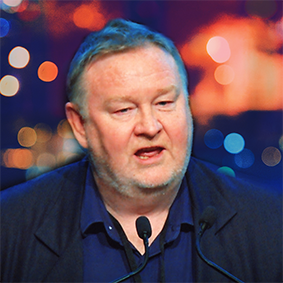
WHAT IS INCLUSION
The promotion, adoption and implementation of inclusive practices, which involves changing policies, practices and attitudes within schools.
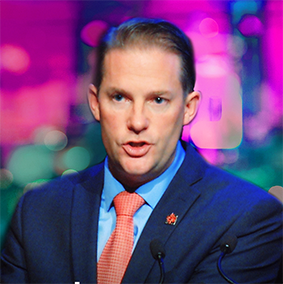
HOW WE INCLUDE
Creating inclusive classrooms & schools starts with vision, policy, systems change, curriculum design and teaching practice.
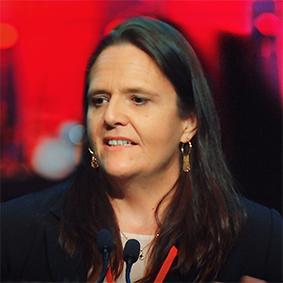
WHY INCLUDE
High quality education & supports enable all students to acquire success in their education and is the basis of an inclusive life and society.
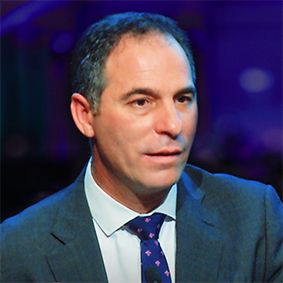
TEACHER IMPACT
All classroom teachers have a role in creating schools & learning environments where all children can learn and feel they belong.

AUSTRALIAN EXPERIENCE
Exemplar inclusive educational practices are happening in Australia. See the possibility and potential of inclusion here and now.
NOW EXPLORE ACCESS READS
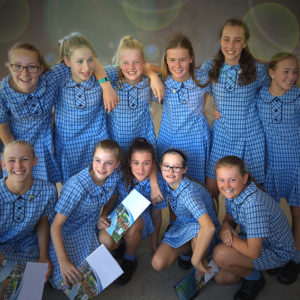
WHAT IS INCLUSION
The promotion, adoption and implementation of inclusive practices, which involves changing policies, practices and attitudes within schools.
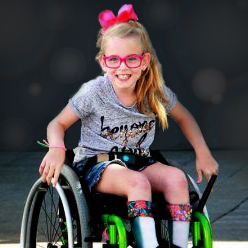
HOW WE INCLUDE
Inclusive classrooms and schools embrace universal design as the foundation for cultivating inclusive attitudes and practices.

CHANGING MINDSETS
Bringing about change one mind at a time is integral to improving the lives of people with disability.

AUSTRALIAN EXPERIENCE
Exemplar inclusive educational practices are happening in Australia. See the possibility and potential of Inclusion here and now.

WHY INCLUDE
All children have the right to be included, to be represented in, to have access to and to receive high-quality education and supports.

TEACHER IMPACT
All classroom teachers have a role in creating schools & learning environments where all children can learn and feel they belong.
A FAMILY ADVOCACY INITIATIVE
This site is edited and maintained by the Advocacy and Leadership Development team.
Image attributions: photos supplied and screenshots from Access Symposium videos.

